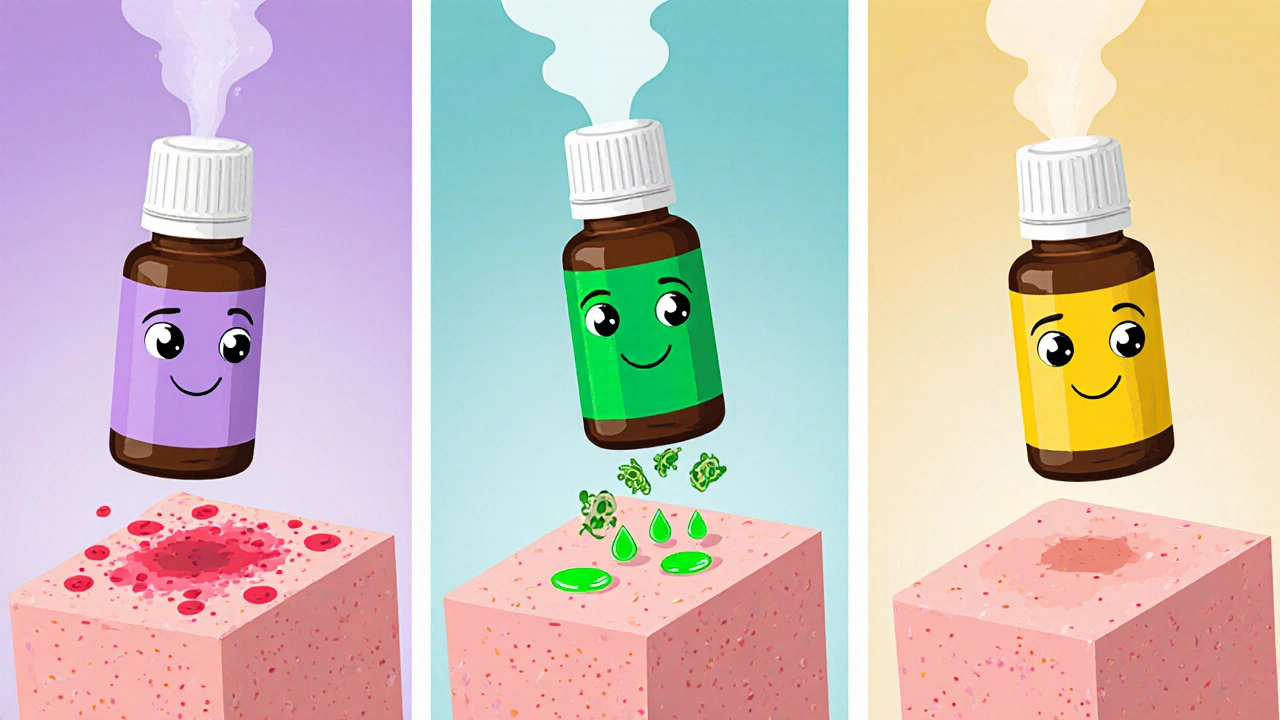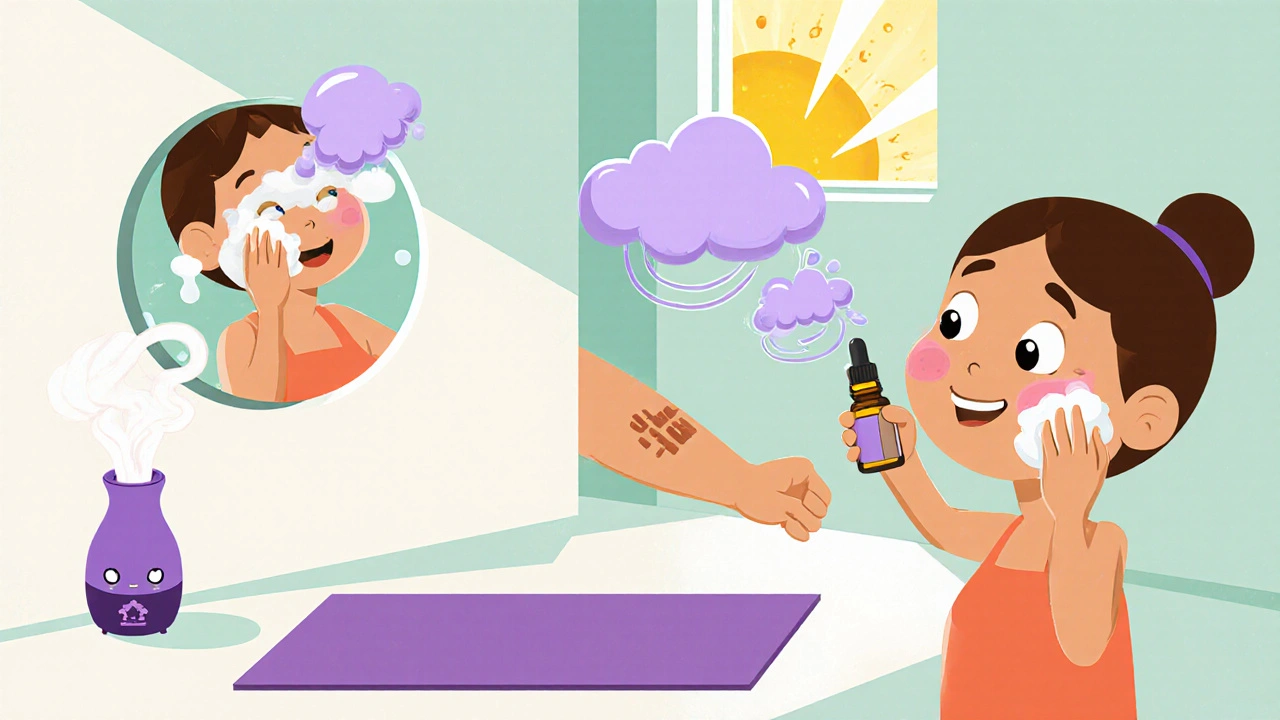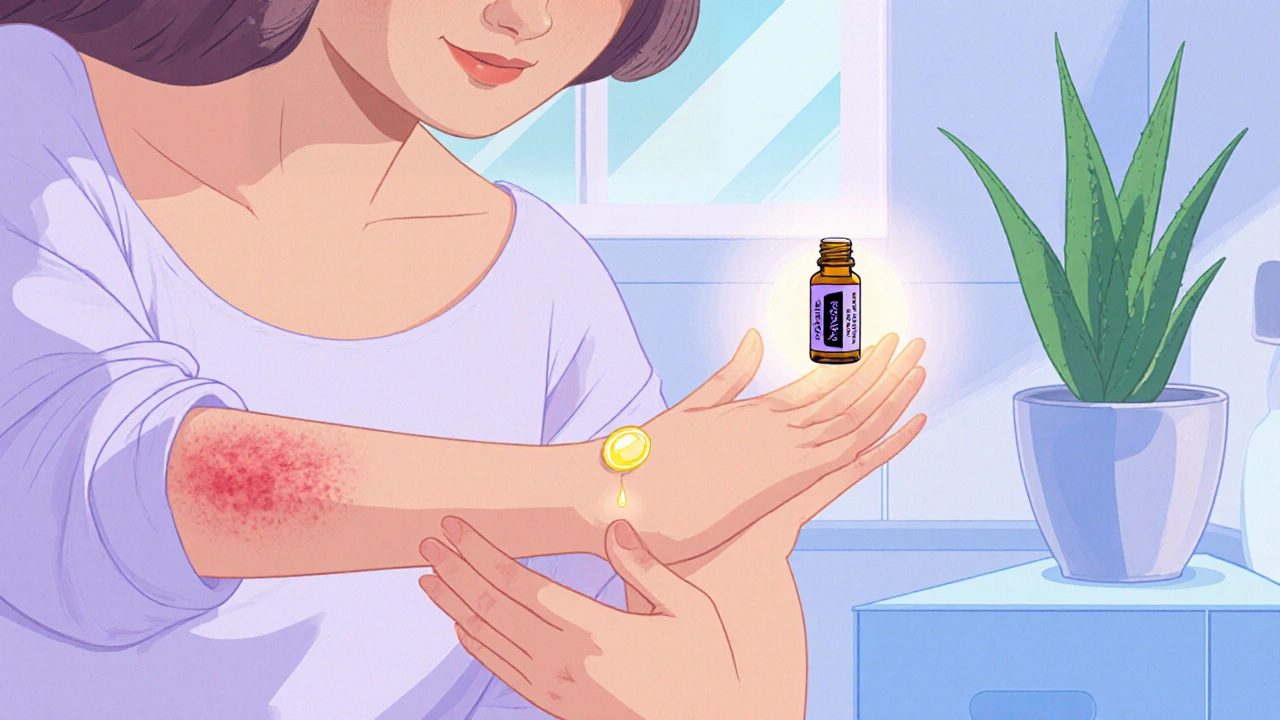Aromatherapy Oil Selector
Find Your Perfect Oil
Answer these questions to get personalized recommendations for soothing skin inflammation
When it comes to soothing irritated skin, aromatherapy offers a surprisingly science‑backed, gentle alternative to harsh chemicals. By harnessing the therapeutic properties of plant‑derived essential oils, you can calm redness, reduce swelling, and support the skin’s natural healing process without the side effects of many over‑the‑counter steroids.
What is Aromatherapy?
Aromatherapy is a holistic practice that uses inhaled or topically applied volatile compounds, known as essential oils, to influence physical and emotional well‑being. Historically rooted in ancient Egypt and traditional Chinese medicine, modern research now links specific oils to measurable anti‑inflammatory and antioxidant effects.
Understanding Skin Inflammation
Skin inflammation is the body’s natural response to injury, infection, or irritation. It manifests as redness, heat, swelling, and sometimes itching or pain. At the cellular level, inflammatory mediators like cytokines (IL‑1β, TNF‑α) trigger blood vessel dilation and immune cell recruitment, which, while protective, can become chronic in conditions such as eczema or psoriasis.
How Essential Oils Target Inflammation
Essential oils contain terpene compounds (e.g., linalool, terpinen‑4‑ol, bisabolol) that interfere with the inflammatory cascade. They can inhibit the production of pro‑inflammatory cytokines, scavenge free radicals, and strengthen the skin’s barrier function. Below we explore three oils with the strongest evidence for skin benefits.

Top Three Oils for Soothing Inflamed Skin
| Oil | Key Active Compounds | Primary Anti‑Inflammatory Action | Best Use Cases |
|---|---|---|---|
| Lavender essential oil | Linalool, linalyl acetate | Reduces cytokine release; promotes collagen synthesis | Eczema flare‑ups, minor burns, post‑procedure redness |
| Tea tree essential oil | Terpinen‑4‑ol, γ‑terpinene | Antimicrobial; blocks NF‑κB pathway | Acne‑related inflammation, fungal infections, minor wounds |
| Chamomile essential oil | Bisabolol, chamazulene | Potent antioxidant; inhibits COX‑2 enzyme | Psoriasis plaques, sunburn, sensitive skin |
Safe Ways to Apply Essential Oils
- Topical dilution: Mix 2-3 drops of your chosen oil with 1 teaspoon of a carrier such as jojoba or fractionated coconut oil. Apply to clean skin once or twice daily.
- Patch test: Before the first use, apply a tiny amount to the inner forearm and wait 24 hours. Discontinue if redness or itching occurs.
- Diffusion: For systemic stress reduction (which can aggravate skin conditions), use a diffuser at 3-5 drops in water for 30‑minute sessions.
Evidence from Recent Clinical Studies
In a 2023 double‑blind trial published in the *Journal of Dermatological Science*, participants with mild to moderate eczema applied a 1 % lavender oil cream twice daily for four weeks. Results showed a 35 % reduction in SCORAD (Severity Scoring of Atopic Dermatitis) compared to placebo.
Another 2024 systematic review examined tea tree oil’s effectiveness across 12 randomized controlled trials. The authors reported a statistically significant decrease in lesion size for acne‑related inflammation, attributing the benefit to terpinen‑4‑ol’s inhibition of the NF‑κB pathway.
Chamomile’s anti‑inflammatory impact was highlighted in a 2022 study on psoriatic plaques, where a 0.5 % bisabolol formulation lowered IL‑17 levels by 28 % after eight weeks of use.

Integrating Aromatherapy Into a Holistic Skin‑Care Routine
While essential oils can be powerful allies, they work best when paired with other skin‑friendly habits:
- Gentle cleansing: Use a pH‑balanced, fragrance‑free cleanser to avoid stripping the skin’s natural oils.
- Moisturize promptly: Apply your diluted oil blend while the skin is still damp to lock in hydration.
- Stress management: Chronic stress elevates cortisol, which can worsen inflammation. Incorporate aromatherapy diffusers, meditation, or yoga.
- Sun protection: Some oils (especially citrus) increase photosensitivity. Always use a broad‑spectrum SPF 30+.
Potential Pitfalls and How to Avoid Them
Even natural substances can cause problems if misused. Common issues include:
- Photo‑sensitivity: Bergamot and other citrus oils can trigger burns under UV light. Stick to non‑photosensitizing oils for daytime use.
- Allergic reactions: Though rare, some individuals react to linalool or terpinen‑4‑ol. A thorough patch test mitigates this risk.
- Quality concerns: Look for therapeutic‑grade oils that are 100 % pure, steam‑distilled, and sourced from reputable farms. Adulterated products may contain synthetic fragrance or harmful solvents.
Quick Checklist for Aromatherapy‑Based Skin Care
- Choose therapeutic‑grade essential oil (lavender, tea tree, or chamomile).
- Dilute 2-3 drops in 1 tsp carrier oil.
- Conduct a 24‑hour patch test.
- Apply to clean, slightly damp skin twice daily.
- Monitor for any irritation; discontinue if symptoms worsen.
- Combine with gentle cleansing, adequate moisturisation, and sunscreen.
Can I use aromatherapy oils on open wounds?
Avoid applying undiluted oils directly to open cuts or burns. A carrier‑oil blend can be used once the wound has formed a protective scab, but always consult a healthcare professional for large or infected wounds.
Is aromatherapy safe for children with eczema?
Yes, with extra caution. Use a very low concentration (1 % or less) and select mild oils such as chamomile. Always perform a patch test on a small area of skin and monitor for any signs of irritation.
How long does it take to see results?
Most users notice reduced redness and itching within 1‑2 weeks of consistent use. For chronic conditions like psoriasis, visible improvement may take 4‑8 weeks.
Do I need a diffuser for skin benefits?
A diffuser helps with stress‑related flare‑ups but is not required for direct skin effects. Topical application is the most efficient way to deliver anti‑inflammatory compounds to the skin.
Can aromatherapy replace prescription steroids?
For mild inflammation, aromatherapy can be an adjunct or alternative. Severe or acute flare‑ups still require medical supervision and possibly steroid therapy.







Here’s a quick rundown on diluting essential oils for inflamed skin use 2‑3 drops per teaspoon of carrier oil apply twice daily after cleansing this keeps the barrier happy and reduces redness
Oh wow you’re telling me I have to actually blend my own skin potion? That’s revolutionary – just slather that lavender on and watch the eczema disappear like magic.
Dear fellow connoisseurs of dermal therapeutics, one must appreciate the subtle symphony of linalool and bisabolol orchestrating a harmonious anti‑inflammatory response – truly a masterpiece for the skin.
In the quiet alchemy of plant spirits we find solace; think of each droplet as a whisper of the earth 🌍 it’s definately more than a scent it's a tiny philosophy of healing 😊
Hey folks 🌟 remember that a gentle patch test is the key to safety – a tiny dab on your forearm can prevent a big hassle later, so keep it kind to your skin.
Let’s paint that inflammation away with the vivid hues of chamomile – a soothing brushstroke of bisabolol that calms the fire and leaves your skin feeling like a sunrise after a storm.
It is advisable to maintain a consistent application schedule, ensuring the carrier oil is of pharmaceutical grade, thereby minimizing potential irritants and optimizing therapeutic outcomes.
Imagine your skin as a garden; the essential oil blend is the nourishing rain that helps each petal stand tall, so stay patient and watch the bloom unfold.
When you first introduce an essential oil regimen you should start with a low concentration to gauge your skin’s tolerance.
A 1 % dilution, which translates to roughly one drop of essential oil per teaspoon of carrier, is a practical baseline for most adults.
Consistency is paramount, so applying the mixture twice daily after a gentle cleanse maximizes absorption while the skin is still slightly damp.
The carrier oil itself, such as jojoba or fractionated coconut, not only aids in spreading the active compounds but also contributes its own soothing lipids.
Clinical studies have demonstrated that lavender oil can reduce the SCORAD index by over thirty percent in mild eczema, underscoring its anti‑inflammatory potency.
Tea tree oil, on the other hand, offers antimicrobial benefits that help keep secondary infections at bay, especially in acne‑prone areas.
Chamomile’s bisabolol component excels at calming the cytokine cascade, making it a good choice for chronic conditions like psoriasis.
Remember to conduct a patch test on an inconspicuous area, waiting twenty‑four hours to observe any delayed hypersensitivity.
If any redness or itching arises, discontinue use immediately and consider reducing the essential oil concentration further.
Sun exposure is another factor; avoid citrus‑based oils during daylight hours because they can increase photosensitivity.
Pairing topical aromatherapy with a balanced diet rich in omega‑3 fatty acids can synergistically enhance skin barrier repair.
Stress management techniques, such as brief meditation or using a diffuser in the evening, complement the anti‑inflammatory effects of the oils.
For those with highly sensitive skin, opting for a 0.5 % dilution and selecting milder oils like chamomile minimizes the risk of adverse reactions.
Storage conditions matter as well; keep your essential oil bottles in a cool, dark place to preserve their potency over time.
Ultimately, while aromatherapy can be a valuable adjunct, it should not replace prescribed medications in severe flare‑ups, and consulting a dermatologist remains wise.
Just remember to wait a day after the patch test 😊
Utilizing a carrier matrix with optimal lipophilicity facilitates transdermal permeation of terpene ligands, thereby augmenting pharmacodynamics at the epidermal strata.
Stop slacking on your routine you’ll never see results if you skip those twice‑daily applications and act like you’ve got time to waste.